The rescue operation
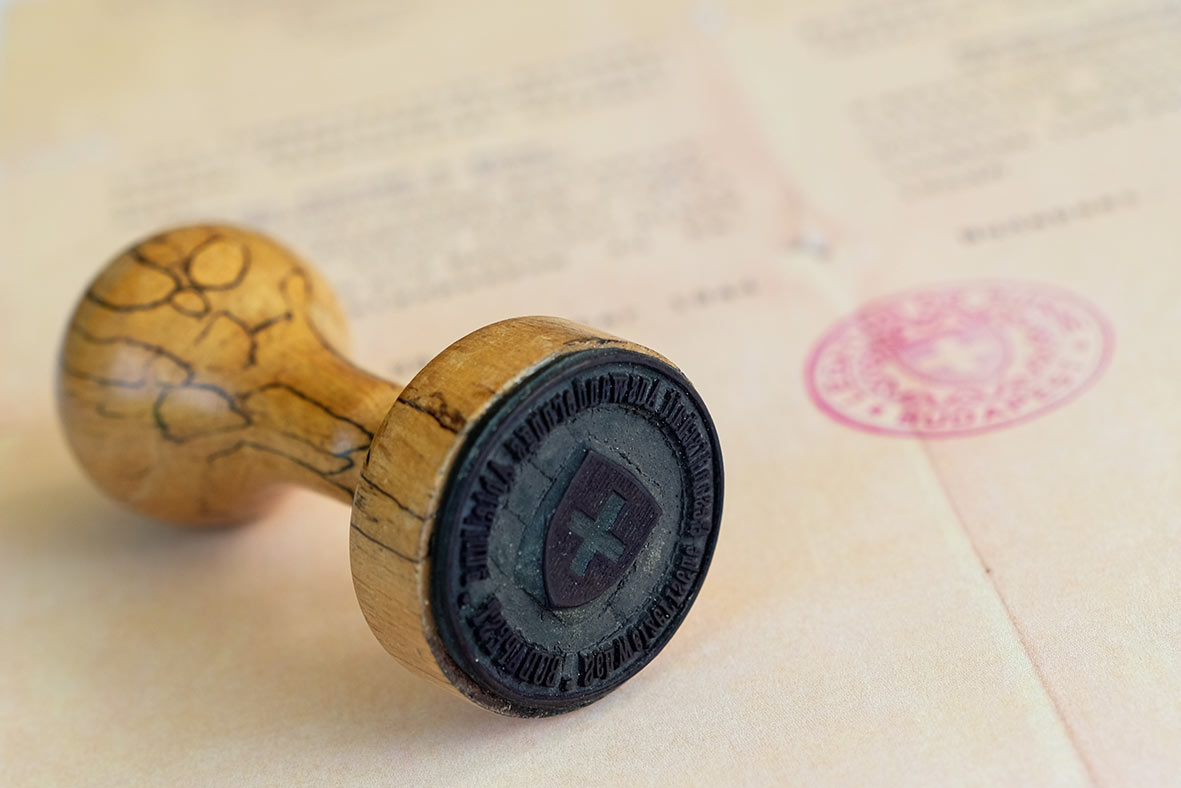
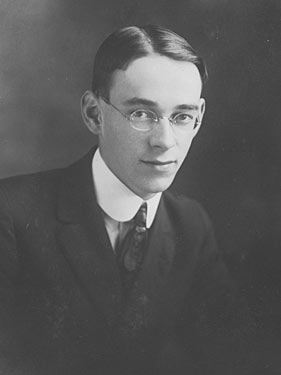
The early days of a Swiss and U.S. citizen
Born into a large family in Appenzell, Switzerland, on March 30, 1895, Karl Robert Lutz decided at the tender age of 18 to emigrate to the United States to escape poverty. There, he anglicized his name to “Carl”.
After a few jobs in Granite City, Illinois, he studied theology at Warrenton College in neighboring Missouri. Shy and short of money, he gave it up in search of steady employment.
The Swiss Legation in Washington (as embassies were then known) recruited him. Rigorous, he was noticed by the head of the post, who advised him to get an education. Young Lutz studied law and history at George Washington University, graduating in 1924.
During his stay in the U.S. capital, Carl Lutz lived at Dupont Circle, in the city center, now occupied by the staff of the U.S. State Department. A plaque bearing his name is affixed to the building today.
Finally admitted to a consular career, the young Lutz worked in various Swiss representations in St. Louis (MO) and Philadelphia (PA) for ten years. On July 25, 1929, he became an American citizen, while retaining his Swiss nationality, which was still allowed in the consular service.
On a personal level, Carl Lutz married his compatriot Gertrud Fankhauser in 1935.
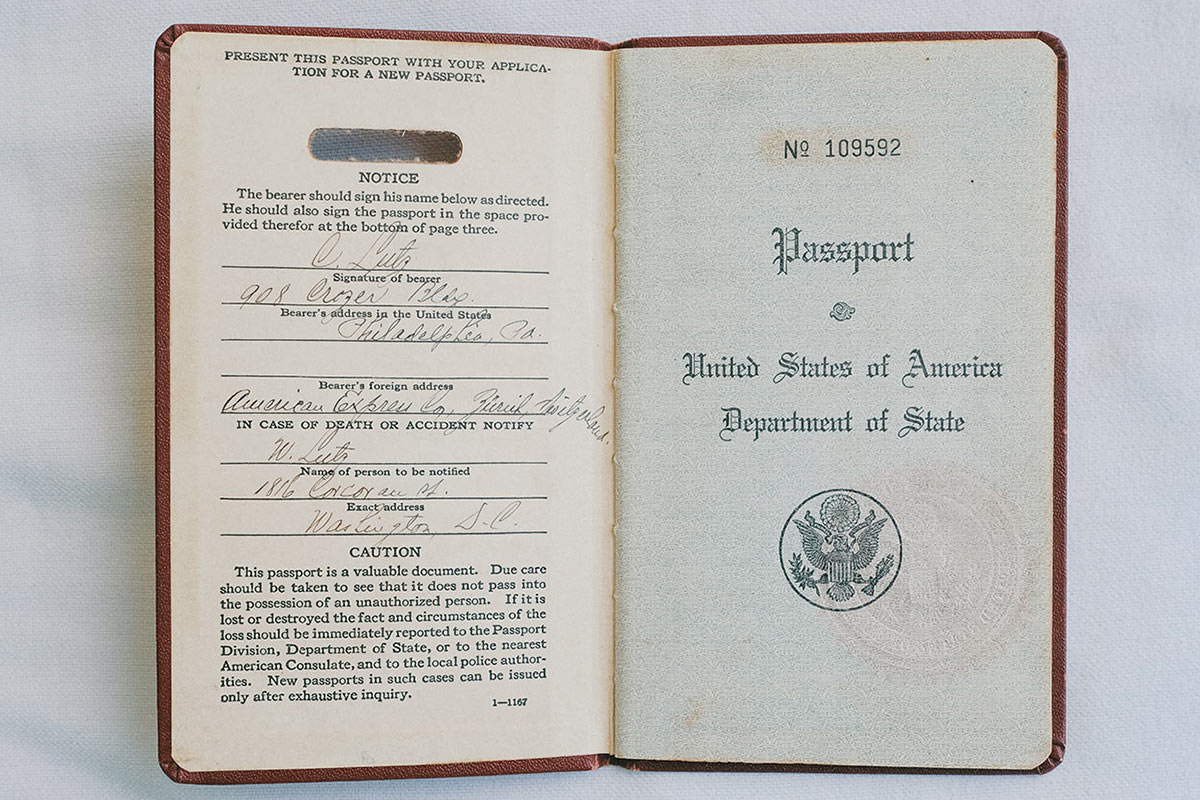
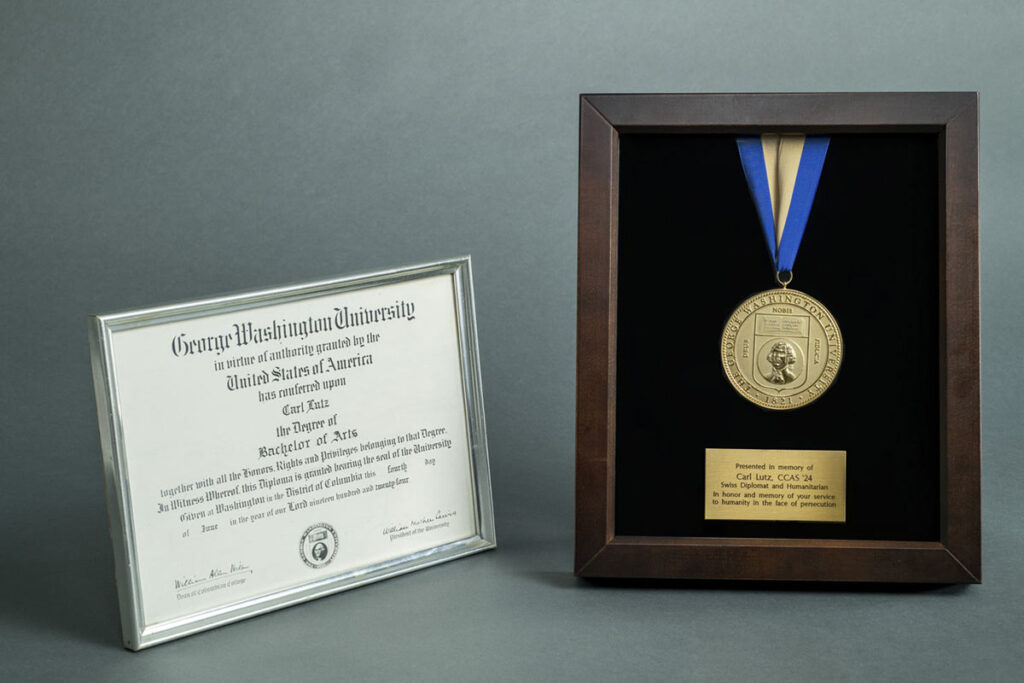
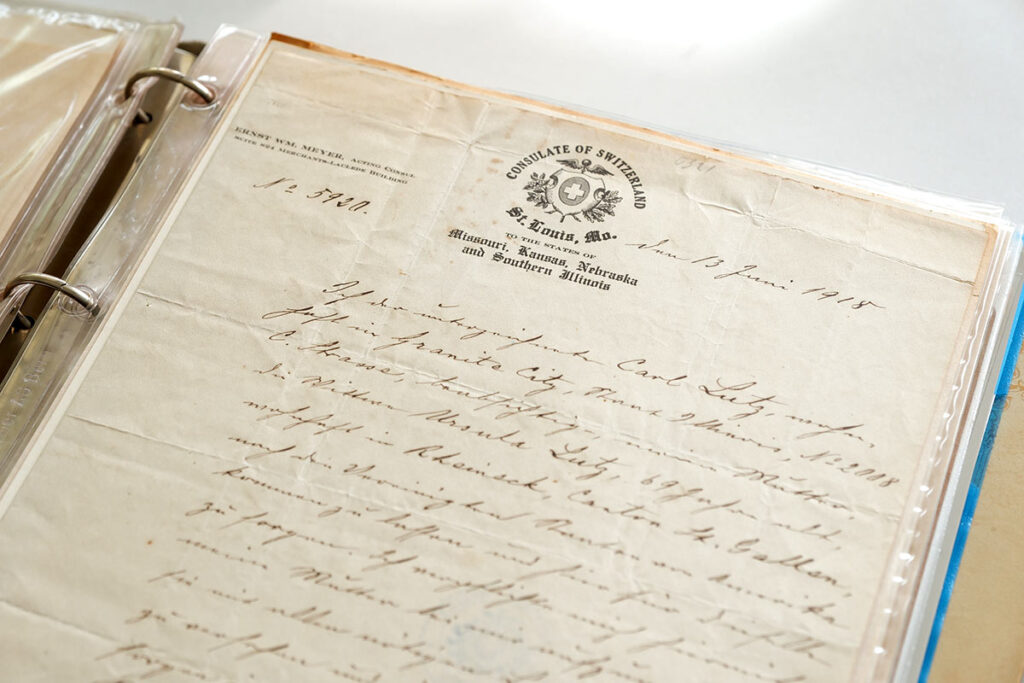
A journey to the Middle East
The period 1935-1940 marked a decisive turning point in Lutz’s life and shaped his rescue work in Budapest. In 1935, he was appointed Chancellor of the Swiss Consulate in Jaffa, Palestine, under British Mandate.
In addition to 2,500 German residents, Chancellor Lutz had to deal with the arrival of some 80,000 Jews fleeing Nazi Germany. A man who used to watch current events from a distance became interested in the cause of the persecuted Jews, and heard their testimonies.
A privileged witness at a pivotal time, the civil servant witnessed the beginnings of the century’s conflict in the Middle East:
“Basically, [Lutz] only left this dangerous and effervescent Palestine in reverse. The British, through the power of their mandate[,] knew well how to pit the Arab and Jewish populations against each other, depending on the momentary situation. They either supported the Arabs against the Jews, or the Jews against the Arabs. Public safety was bad.”
Alexander Grossman
When war broke out in 1939, Germany asked Switzerland to represent its interests in Mandate Palestine (goods and people). Carl Lutz was entrusted with this task. His first act was to promptly remove the German Consulate’s swastika, which was causing disgust among Jerusalemites. It was replaced by the neutral colors of Switzerland.
Lutz acquitted himself brilliantly. The German state praised his actions, in particular for protecting German citizens held in prison camps.
In 1941, Lutz was briefly sent to Berlin for six weeks to manage Yugoslav interests. The invasion of Yugoslavia brought this mandate to an end.
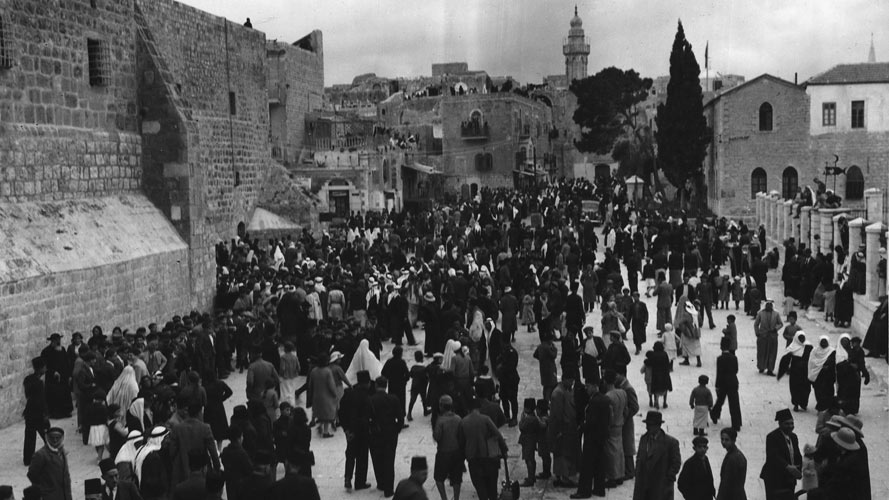
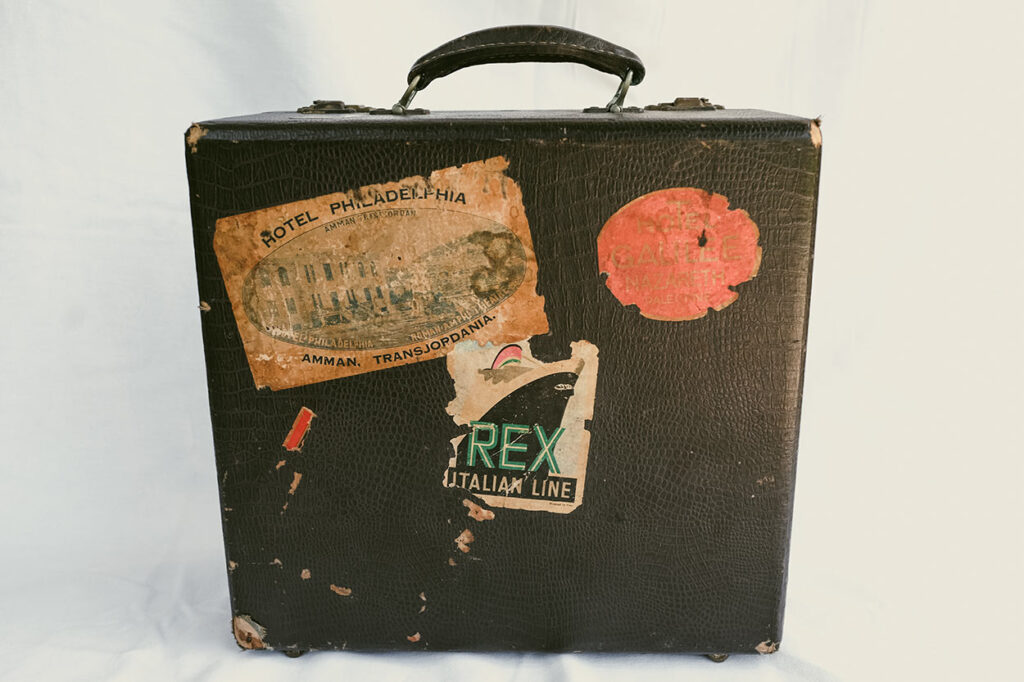
Budapest: in charge of foreign interests
At the beginning of 1942, Carl Lutz was promoted to vice-consul. He was appointed to the Swiss Legation in Budapest to represent the interests of fourteen foreign countries that had broken off diplomatic relations with Hungary, including the USA and Great Britain.
In this capacity, the vice-consul enjoyed a dream life on the spot: he lived in the British Empire Residence on the royal hill of Buda, rode in the Packard limousine of the American head of post, and worked in his offices on Liberty Square, which is still the American Embassy in Hungary today.
But luxury comes at a price. The professional task is grueling, with nearly 13,000 nationals to protect. In addition to the two Anglo-Saxon giants, the vice-consul had to watch over the goods and people of Canada, Belgium (occupied), Chile, Egypt, Haiti, Yugoslavia (occupied), Honduras, Paraguay, Uruguay, Venezuela, El Salvador (from July 4, 1944) and Romania (from August 25, 1944).
Above all, he had to manage a task that fell outside his strict mandate, and which was tolerated by Berne on “humanitarian” grounds: organizing Jewish emigration, strictly restricted, to Mandate Palestine.
At the time, Great Britain had published a Third White Paper. This text restricted immigration to Palestine to 75,000 Jewish individuals between 1939 and 1944, as refugees – and a maximum of 15,000 per year, from all over Europe. Carl Lutz was responsible for implementing this treaty in Hungary.
From April 1942 to December 1943, the rigorous official allowed the emigration of over 10,000 Hungarian Jewish children via Romania and the Black Sea port of Constanța.
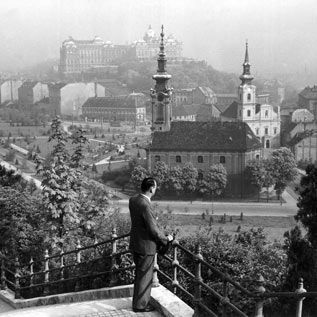
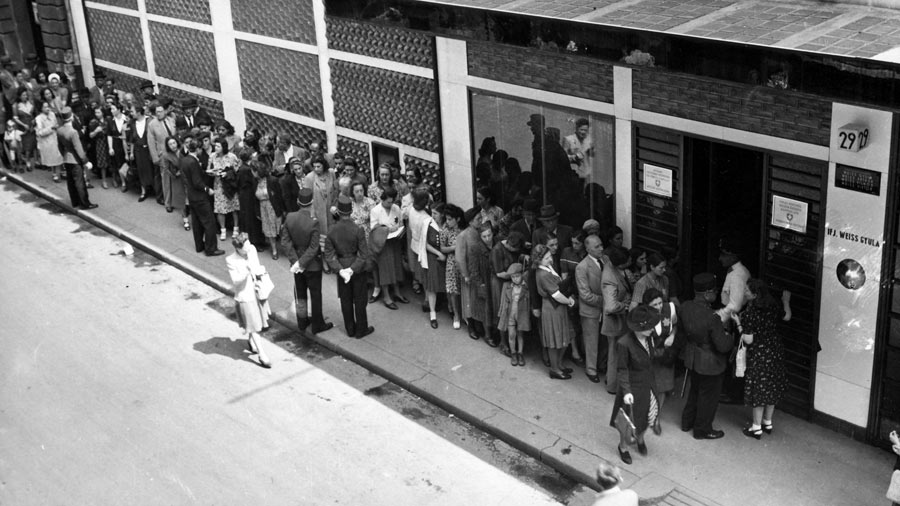
Hungary under occupation
On March 19, 1944, Germany invaded Hungary, fearing that Hungary would switch sides and fan the front line. Hitler imposed a President of the Council of Ministers favorable to him, while keeping the historic Regent Horthy at the head of the country.
Overnight, conditions for the Jews, already poor, became desperate. The German state, led by SS Lieutenant-Colonel Adolf Eichmann, instituted terror: Jews had to wear a yellow star, were forbidden to travel, had their property confiscated and were arbitrarily arrested. Hungary is divided into six zones, isolated from each other. The territories of annexed Transylvania were sealed off.
From April 16 to early July, 437,000 Jewish civilians from the Hungarian provinces were placed in ghettos and, from May 15, deported to the Auschwitz-Birkenau extermination camp in occupied Poland. The SS photographic service took the only known photos of the selection and the arrival of the civilians, after days of transport without food or sleep.
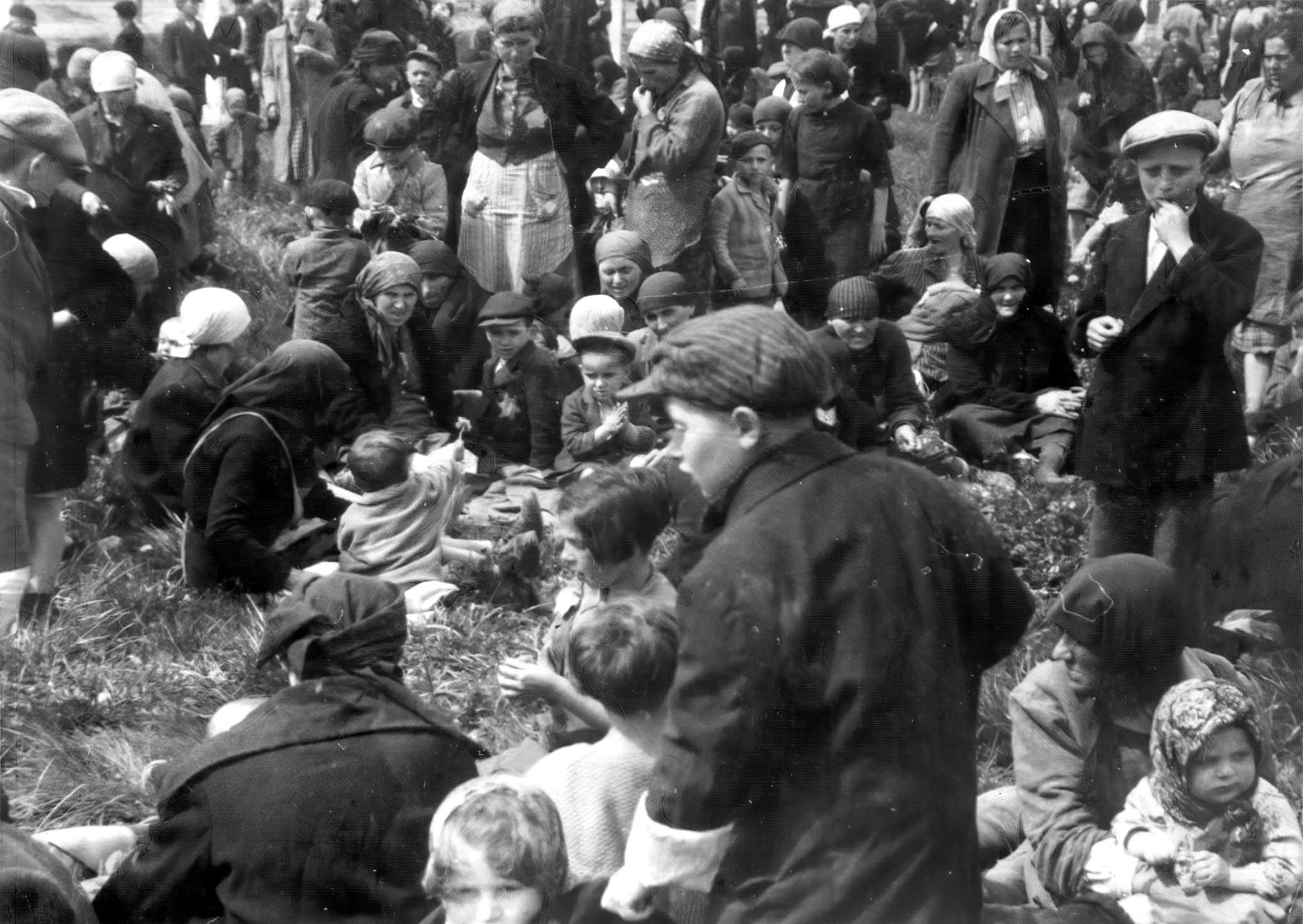
In six weeks, a vibrant, well-integrated minority disappears from its own country. All that remained were the 180,000 Jews and 62,000 converts in Budapest. At the end of June, they too were confined to “Yellow Star Houses” awaiting deportation.
On June 19, 1944, at a time when the slaughter of provincial Jews was being carried out with unprecedented speed, Carl Lutz leaked what would become known as the “Auschwitz Protocols” to a visiting Romanian official. This document, detailing the extermination camp, was taken back to Geneva, Switzerland. A diplomat from El Salvador, with whom Lutz exchanges forbidden correspondence, distributes the protocols to the Swiss and international press. The subject hit the headlines in early summer.
The Hungarian government, under political and media pressure, announces the suspension of deportations on July 7, 1944.
“Deportations in the country were already continuing. We already had accounts of the disarray at Auschwitz from a few Polish and Slovak Pioneers who had managed to escape. That’s why we felt it was so important to awaken public opinion abroad, as a matter of urgency.
He [Moshe Krausz] collected data on the deportations to Hungary, attached details of all the misery they brought, and added them to the Auschwitz testimonies. This request [the Auschwitz protocols] was forwarded abroad – thanks to Consul Lutz – by a Swiss courier, and the results followed surprisingly quickly.”
Margit Oblath, 1945
As an advocate for British interests, Carl Lutz keeps a list of 7,000 Jewish adults and 800 Jewish children authorized to emigrate to London-administered Mandatory Palestine.
As such, Lutz had the right to issue letters of protection (“Schutzbrief”). Pending their departure, the Jews were thus under Swiss consular protection. In effect, they are exempt from compulsory labor and possible deportation.
On July 15, 1944, Lutz met a young Swede, Raoul Wallenberg, who had recently arrived in Budapest. Wallenberg, who had initially come on behalf of the War Refugee Board to exfiltrate 649 Jews, learned of a completely different plan from his Swiss colleague: to extend protection to entire families, using the consular tools at his disposal.
Wallenberg was seduced. In particular, he asked for the text of the Swiss letters of protection.
From now on, the two men would work together, in coordination with the local diplomatic corps.
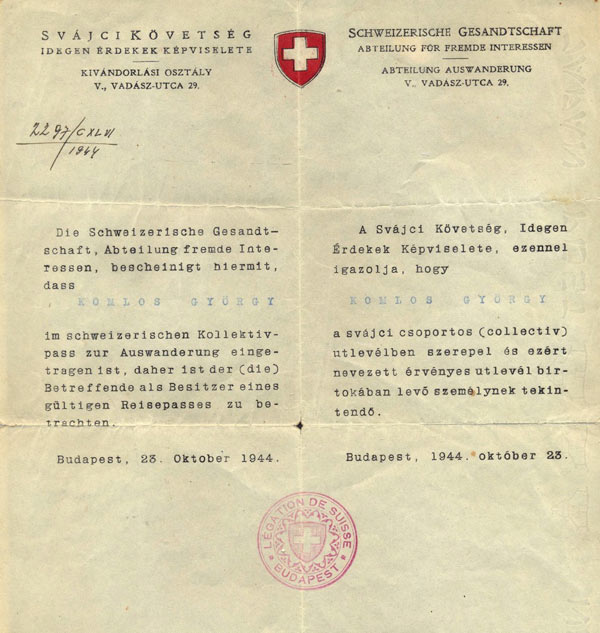
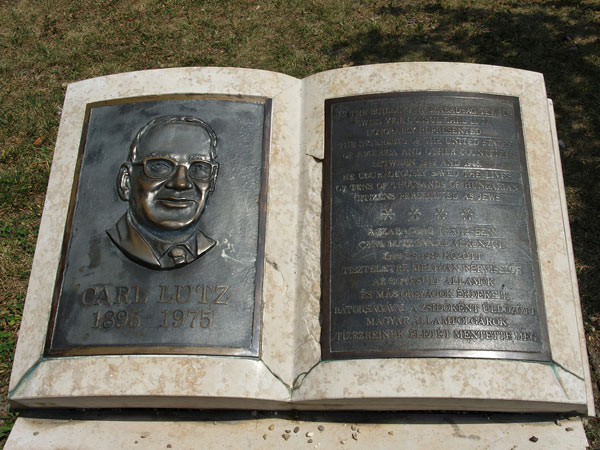
The letters of protection
Lutz’s plan took advantage of an administrative loophole: the Germans had agreed to the departure of a strict contingent of 7,800 migrants. The Swiss vice-consul went to plead their cause with Adolf Eichmann, the SD officer in charge of the “Jewish question” in Hungary.
Eichmann: “You speak like Moses imploring Pharaoh. Here I am my master’s faithful servant. The Jews must be sheltered from the advancing front, to prevent sabotage in our rear. As we speak, I am thinking above all of my comrades who are freezing their feet off in Russia.”
Lutz: “Mr. Obersturmbannführer, in my eyes, there are no Jews, Germans or Swiss. There are only human beings trying to save their lives. If you were a Jew, you’d come to me for help yourself.”
Eichmann: “Damn, you’ve got a lot of nerve telling me that!”
Carl Lutz to Adolf Eichmann, April 25, 1944
The contingent of Jewish refugees was finally approved by Hungary on June 27, then by Germany, Hitler himself, on July 10, 1944.
In the exchanges, these 7,800 visas for Mandatory Palestine are presented as “units”. On July 21, he announced to the Hungarians that he considered each “unit” to be a family, and that these were 7,800 “heads of family”. This ploy artificially increases his quota to “40,000 people”. Lutz has no authority from either Berne or London to extend his protection.
Lutz assumed that Hungary, embroiled in a storm of criticism for its “Jewish policy”, will have no political leverage to debate the figures, however false they might be. This was all the more true given that several players in the Jewish community had been trying to obtain concessions since the deportations were suspended at the beginning of July. The tactic seemed to be working. Hungary agreed to the 40,000.
But in the end, Lutz was disillusioned. As soon as it learned of the coup, Berlin reacted.
“The Swiss Legation informed the [Hungarian] Ministry of Foreign Affairs that it had immigration certificates for Palestine for 7,800 families, or around 40,000 people in all […]. […]. The attention of the Ministry of Foreign Affairs has been drawn to the fact that these figures differ very considerably from the number of “about 7,000 persons” mentioned in the register […].”
German Plenipotentiary in Hungary Veesenmayer in Berlin, July 25, 1944
The offer provoked bitter exchanges between the capitals in the summer of 1944. Germany, of course, but also Great Britain (sticking to the Third White Paper) did not want an influx of Jewish refugees.
The Allies feared that the 40,000 were in fact a hostage-taking operation designed to divide them. The chancelleries all end up rejecting the 40,000, including Hungary under German pressure. Suspecting that its representative on the spot had acted without authorization, Great Britain clarified to Carl Lutz that these were “individuals, not heads of families”, with the British official emphasizing the negation in his correspondence in order to establish his absolute character.
London did not wish to intervene, nor did Switzerland, in its role as intermediary, fearing the knock-on effect. While it conducts modest humanitarian negotiations on a bilateral level, Bern refused to allow Lutz’s Foreign Interests Division in Budapest to become involved in rescue operations. It was not its responsibility: “the measures decided by the Hungarian government against the Israelites are a matter of domestic policy in which we do not consider ourselves bound to intervene”, wrote the head of the Division, Arthur de Pury, to Federal Councillor Pilet-Golaz (June 14). To the Americans, who insisted that Switzerland should send specialized personnel to Lutz in Hungary – specifically to prevent deportations – the Federal Councillor again replied in the negative (June 21), arguing for the safety of the personnel onsite: “we must fight against the tendency to divert the activity of defending foreign interests from what it should be.”
The official quota of 7,800 “individuals” was once again the only figure accepted for negotiations.

Documents that save lives
Swiss staff on the ground refused to give in. Without authorization from its superiors in Berne or its agent state, in London as well as Berlin and Budapest, the Foreign Interests Division in Hungary continued to distribute surplus safe-conducts. To conceal the excess, all Swiss letters of protection were numbered from 1 to 7,800, then again from 1 to 7,800, giving the illusion that the limit is respected.
By autumn, the number of letters of protection in circulation far exceeded the strict quota. “Consul Lutz was benevolent, and on several occasions stressed that he had generously distributed the protection documents despite the strict instructions from the Anglo-Saxons”, a rabbi testified in 1945.
Lutz had almost three times as many certificates issued as he was entitled to. He distributed them in the ghetto areas of Budapest by mail. Faced with imminent announcements of renewed massacres, he no longer readed the documents he signs. This tactic was all the more serious as every “migrant”, once under protection, was considered a citizen of the British Empire.
To reinforce his protection, Carl Lutz spontaneously created “collective passports” on July 29, to protect the Jews as a family. “We are astonished that you yourself have established a collective passport” was the reply of Bern, which had little taste for his agent’s largesse. The initiative earned him internal criticism years after the war.
Using the full range of consular tools at his disposal, Carl Lutz went beyond the call of duty to stem the tide of deportations: he clandestinely issued identity papers to young Jews, including Slovakian Rafi Frieldl, who had artificially become a US citizen (March 20). Some refugees were promoted by Lutz to “Swiss citizens”, such as Simsha Humwald or Alexander Grossman, his Hungarian right-hand man, who speaks German. The latter worked under a false name with a Swiss accent: “Dr. Alexander Kühne”.
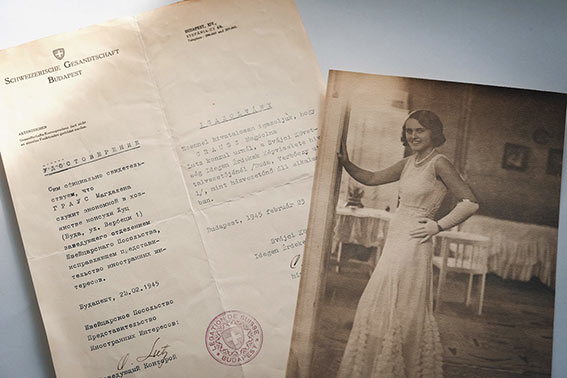
On April 26, 1944, the vice-consul welcomed the Grausz family, a Hungarian Jewish family in distress. They asked for help: their daughter had been born in Hendon, England – so she was entitled to protection. Lutz went beyond the call of duty: he declared the whole family… citizens of El Salvador. Although none of them speaks Spanish or has ever visited the country, Central American citizenship proved an effective bulwark against the police. To this administrative protection, the vice-consul added a physical barrier against the raids (April 27): he placed the bedroom of six-year-old Elizabeth Agnes in Pest under Swiss extraterritoriality. She was to become his adopted daughter.
In addition to his initial plan, Lutz distributed to persecuted Jews, by his own admission, “thousands” of falsified certificates – assuring them that they are citizens of El Salvador. Plenipotentiary Vessenmayer reported to Berlin that “20,000” Salvadoran papers were in circulation in Hungary, a figure that was no doubt extrapolated and intended to provoke a reaction in high places.
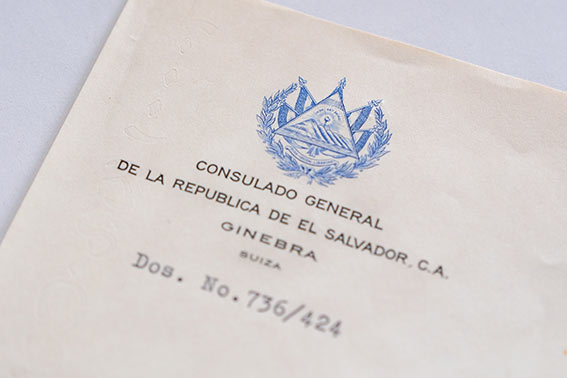
Lutz obtained these false certificates from the Salvadoran Consulate General in Geneva. First clandestinely, via visitors (including Florian Manoliu, declared Righteous in 2001), then mixed in with the legitimate diplomatic pouch mail, once Switzerland took charge of the small country’s interests. In Geneva, the rescue network was headed by a “Salvadorian 1st Secretary”, Georges Mantello, in reality a Jewish immigrant and local employee. He worked in secret to protect Jews from deportation. He was supported by local students paid on a piece-rate basis. Added to this network were lawyers and a benevolent translator, an employee of the cantonal Chancellery, who will be investigated.
Mantello and Lutz kept in touch by letter, without authorization. On October 28, the vice-consul wrote: “At least you can have the satisfaction of knowing that by forcing the representation of San Salvador’s interests (I assume), you have created a human work which will earn you the gratitude of thousands of people saved when normal conditions reign again in the world”. The Swiss State discovered that Lutz was engaged in “direct correspondence with Mantello without the Division’s knowledge” (November 25) and demanded that it ceased immediately, without discovering its real purpose.
Mantello had a poor command of the French language. He wrote all the certificates in the female form – which didn’t exactly make things any easier for Lutz in Budapest, who had to add the names to the blank certificates. Little Agnes’ father, Alexander Grausz, lived with a woman ID, “reconnue comme citoyenne” (23 July). Fortunately, the SS and the militia did not speak French either.
Carl Lutz’s own future wife, Magda, a Hungarian Jew, lived with him under a false Salvadoran nationality.
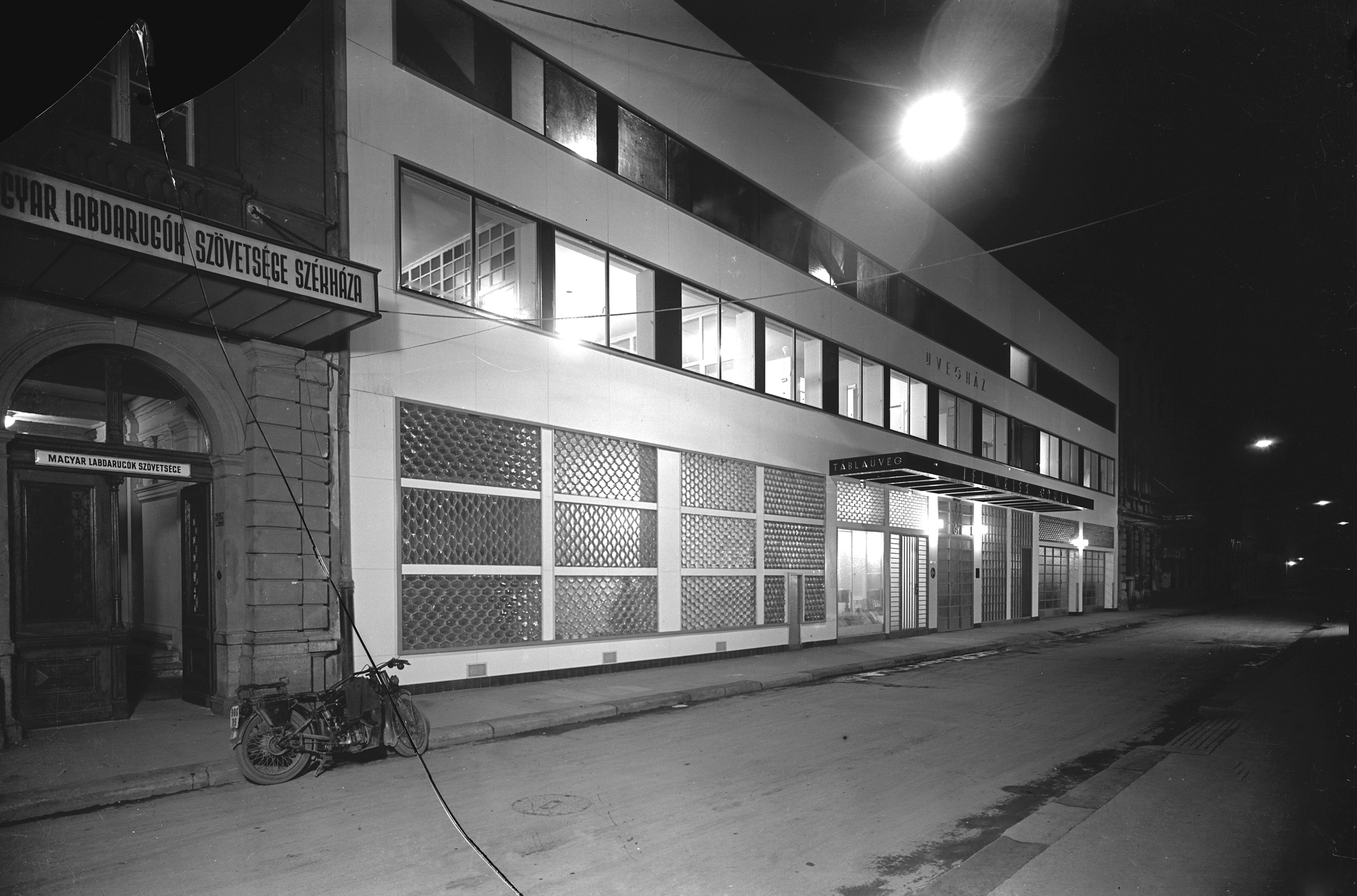
The Glass House
Wishing to protect his staff from explicit threats by the SS, Lutz took a new initiative: he rented the premises of a glassworks in the center of Budapest. He set up his emigration service there on July 24, 1944.
The industrial warehouse became a refugee camp for 2,750 people. Its glass walls shone “like hundreds of mirrors”, which impressed the Jewish refugees. All the more so as it was located on Vadasz Street, “the hunters’ street” in Hungarian, a sinister omen as denunciators and militiamen lurked outside.
A veritable “little autonomous society” was created, with a choir, a kitchen, classrooms, an infirmary and improvised showers. Some of the couples formed, and even married after the war. The Jews live on top of each other.
When they went to the toilets, dug out of the ground in the courtyard, the refugees risked their lives: they were bombed by Russian planes attacking Budapest.
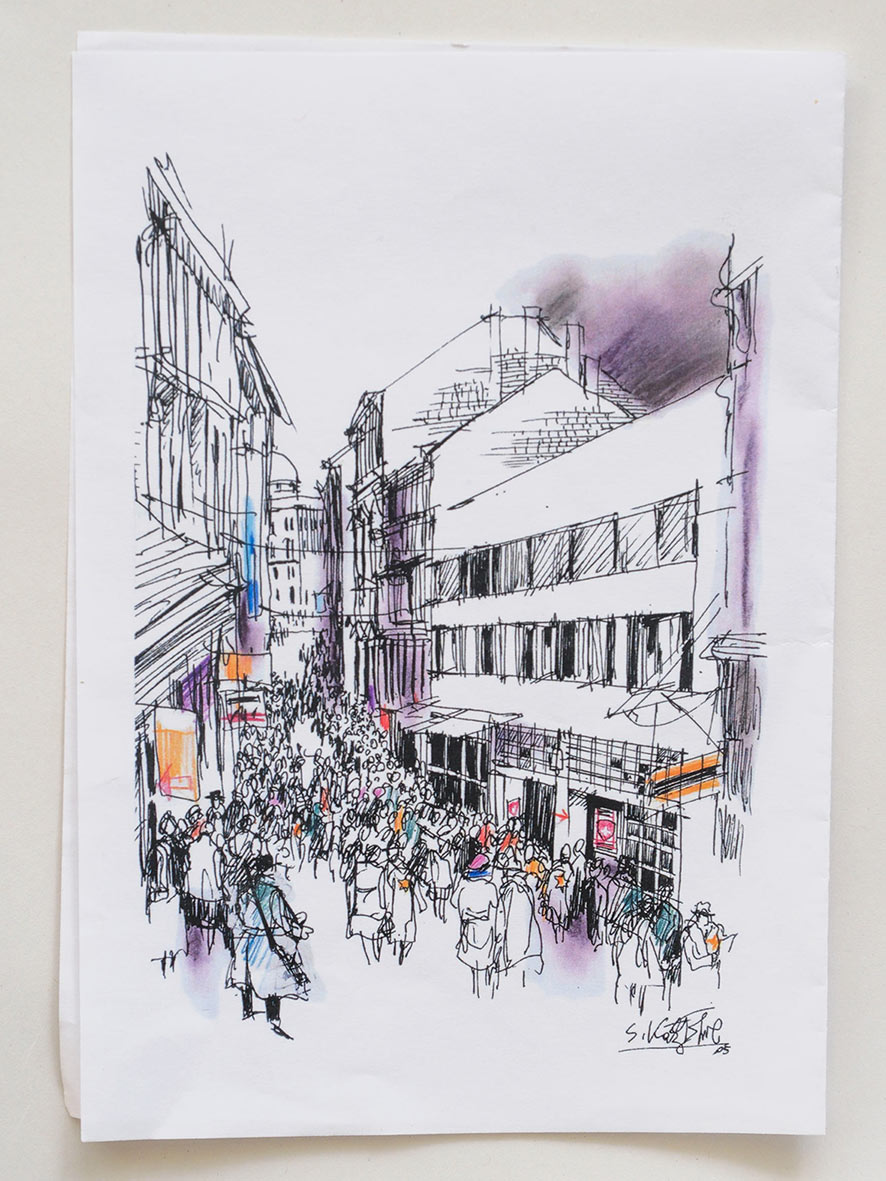
“At night, we couldn’t go to the bathroom, but we risked losing our sleeping space, which would be taken by someone else before we returned. The previous owner would go into a rage. I tried to cover my ears so as not to hear. The wronged party would end up sleeping on a chair or on the floor. If one of us turned the other way, the neighbor had to turn too. But the Glass House was paradise, an oasis of security.”
Irena Braun,14 years old
As these are technically offices linked to the Swiss Legation, no civilians were allowed to make noise, as their presence was not authorized. They lived in hiding, in the basement.
A German air force unit even sent soldiers to supply the “Maison de Verre”, thinking they were helping a Swiss diplomatic representation – and not realizing that it housed thousands of Jews!
The place fueled anti-Semitic hatred in Budapest. In early December 1944, the militia planned a roundup and execution in the Pálvölgy caves. A unit of the regular army was assigned to the task. The project was never carried out.
There was nevertheless a militia attack on December 31, 1944, led by Mihaly Balog. In the panic, three people were killed and seventeen wounded. It was narrowly thwarted. Frustrated by their failure, the militia returned the following day and executed the owner of the “Glass House” on the banks of the Danube.
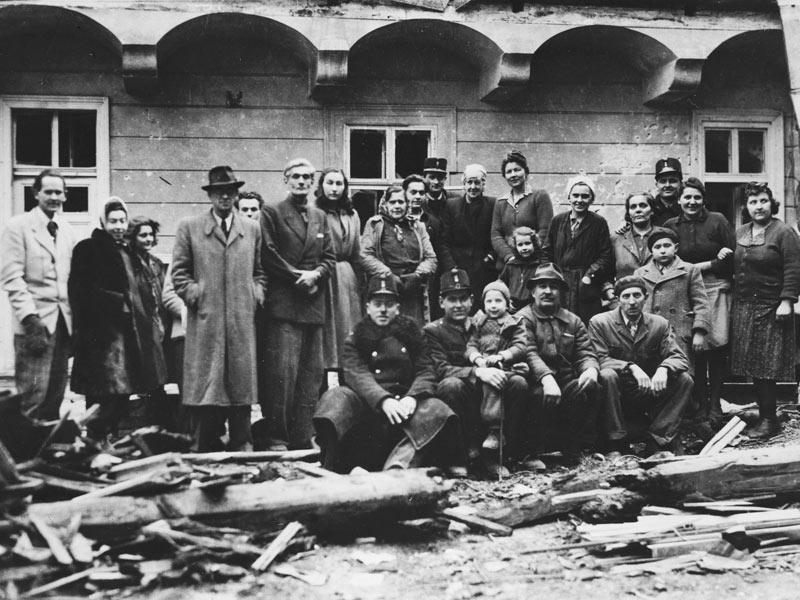
The Protected Houses
Lutz was aided in his action by his wife Gertrud (declared Righteous in 1978) and by the Halutzim, a group of Jewish resistance fighters who provided the logistics for the rescue operation. Other diplomats from the Swiss Legation supported the rescue operation: Minister (Ambassador) Maximilien Jäger, Ernst Vonrufs, Peter Zürcher and Harald Feller (declared Righteous in 1999).
Soon, the protection papers were no longer enough. To strengthen consular protection for Jews, Carl Lutz imagined extending it from individuals to buildings. The idea was particularly ingenious.
This protective measure, which was an extension of his original prerogatives, called for all his “Jewish migrants” scattered across the city to be grouped together in a dedicated district – and thus avoid mistakes in the event of roundups. Neither Budapest nor Berlin wanted to arrest legitimate holders of letters of protection, and thus have to deal with complaints from the Swiss state.
Strategically, Lutz presented the measure as a “transitional measure prior to emigration” in order to overcome the reluctance of the SS. On paper, the logic was unstoppable. Hungary agreed. It makes its gendarmerie available and defines the “protected” district.
Lutz placed dozens of Palatine buildings on the same street (Pozsonyi út.) under diplomatic immunity. This enabled him to call the police if Hungarians or Germans entered the area, as it was now Swiss territory. The tactic was copied by Sweden, then Spain, Portugal and the Vatican, all claiming to protect their nationals. In all, the diplomatic community in Budapest housed 32,000 people in an “international ghetto”, two-thirds of them under the Swiss flag.
Reporting to his Head of Department (Minister), Federal Councillor Pilet-Golaz (December 8, 1944), Carl Lutz explained that he was offering consular protection to the number of Jews for whom he was officially responsible: “7,800 people, in 25 houses.” In reality, according to Wallenberg’s report of the same date, the Swiss Legation was protecting 20,000 civilians, holed up in 76 buildings along the Danube. The Swiss diplomats had neither the staff nor the supplies to manage such an improvised refugee camp, in appalling conditions.
“I was completely alone in the face of growing legal problems. With no administrative apparatus, no financial means and no official mandate”.
Carl Lutz, 1946
Every day, Lutz and his wife risked their lives fighting against the illegal roundups carried out by the Hungarian fascist militia (Arrow Cross). While Carl was threatened with a pistol, Gertrud Lutz offered the militiamen Swiss chocolate to soften them up.
Today, a commemorative plaque is affixed to the bottom of every protected building, and the quay next to the Hungarian Parliament is named after Carl Lutz.
The "Death march"
On October 15, 1944, the Hungarian government collapsed, and the Arrow Cross militia took power. The SS took advantage of the situation to resume persecution. This time on foot, towards Austria. In response, Jewish resistance groups no longer respected Lutz’s strategy of limiting the number of forgeries in circulation, in order to conceal fraud. The number of counterfeit Swiss papers exploded (nearly 30,000), and their quality plummeted.
“I knew that the [resistance networks] were producing forged papers for various rescue operations, but the volume of this production far exceeded what I thought,” said the Swiss official after the war. The young Jews who copied the official seals, often in the darkness of a cellar, improvised: their spelling was shaky, the address incomplete, the contents backdated. Sometimes, they mistake the Swiss seal (white cross on red background) for the inverted Red Cross flag. In addition to forged letters of protection, housing certificates, Christian birth certificates and SS-Maria Theresia division service books were produced – some Jews disguised themselves in Nazi uniforms to fight.
From November 8, 1944, 40,000 civilians were dragged 240 kilometers to the Austrian border. Lutz authorized his staff, using diplomatic vehicles, to drive up the columns to exfiltrate, as far as possible, Jewish refugees, declared on the spot to be “migrants”, “Salvadorians” or even “Swiss”, even though the unfortunates sometimes presented store invoices as papers.
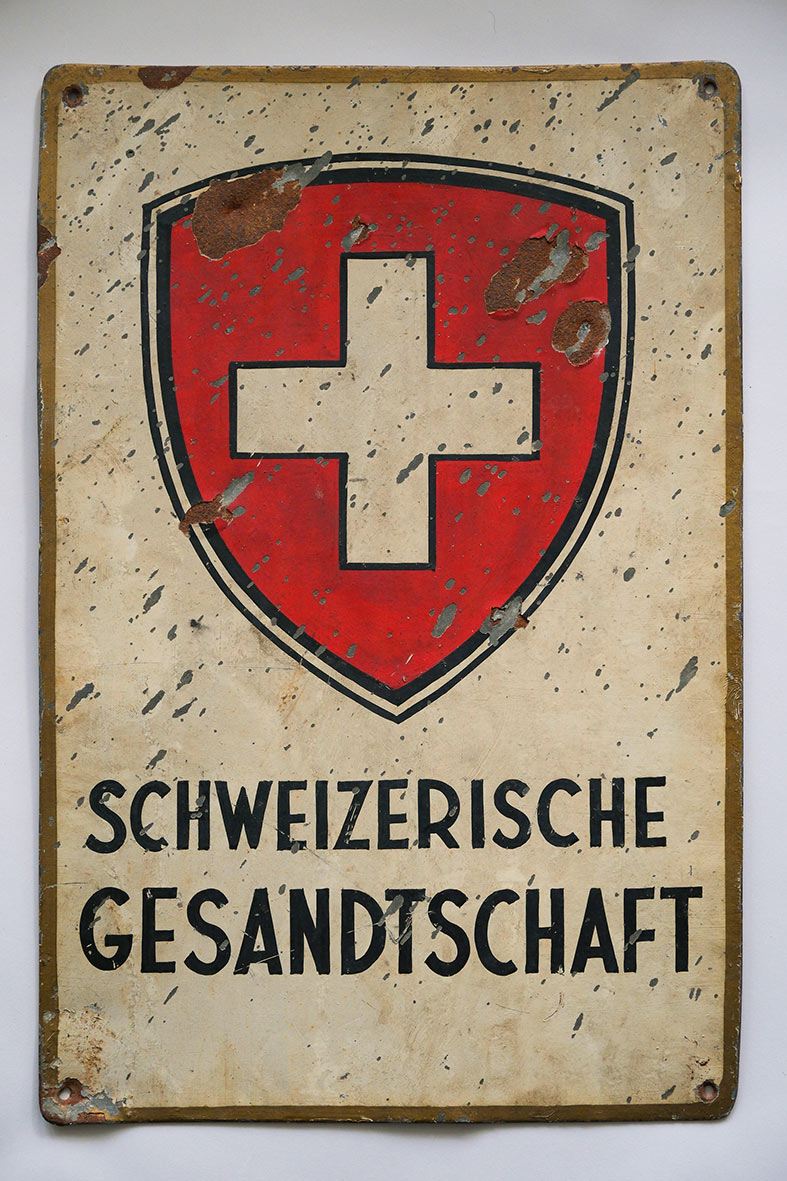
“It was reported to me that when the marching Jewish columns were heading towards the Reich, emissaries from the Swiss Legation followed one column. They distributed protective passes to the marching Jews in such large numbers that by the end of the day, the majority of the column had disappeared, since the passes issued were respected by the accompanying Hungarian soldiers.”
Ernst Kaltenbrunner, Director of the Reich Central Security Office (RSHA), Berlin
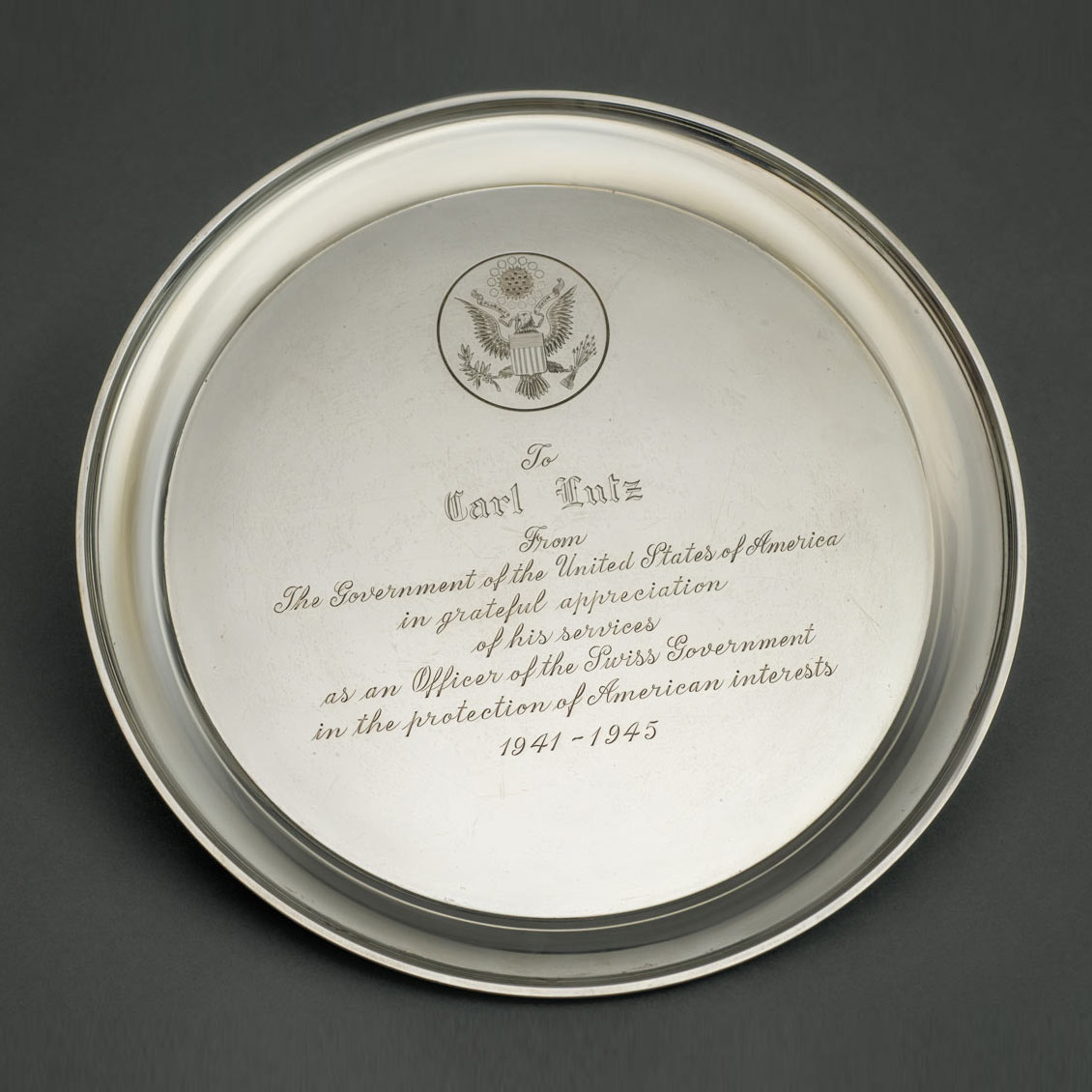
The rescue effort was so extensive that the Reich Central Security Office (RSHA) sent a telegram of complaint to Budapest. In his correspondence, the German plenipotentiary in Hungary asked Berlin whether it should “dispose” of the Swiss official, in what amounted to an unanswered request for his elimination.
In response, the Fascist Hungarian state forced Lutz to go to the starting point of the march (the Obuda brickworks) to differentiate between genuine and forged papers. The experience traumatizes him.
The rescue network is severely shaken by the advance of the front. In early December, following an unsuccessful gendarmerie investigation in the Maison de Verre, the militia hanged a Jewish resistance fighter, Hermann Mandel, in the Place de la Liberté. The location, under Lutz’s windows, served as a warning to Swiss personnel, who were so helpful to the persecuted.
From then on, official protection was no longer respected. When Swiss officials call the police to complain about raids, they are told “Swiss protection, or Jewish protection?” Several Lutz houses on Pozsonyi Street are rounded up, and refugees deported to the Bergen-Belsen camp or thrown into the river, tied together with barbed wire. In mid-December 1944, Carl Lutz dived halfway into the frozen Danube to save a Jewish woman. He saved her life.
The Red Army surrounds Budapest. The siege begins. Carl Lutz spends Christmas 1944 locked up with his staff in the Residence on Buda Hill, under artillery fire. His rescue efforts continue under the leadership of two of his employees, Ernst Vonrufs and Peter Zürcher, both of whom are declared Righteous Among the Nations.
On January 18, 1945, the Glass House was taken over by the 18th Guards Infantry Corps, in gloomy silence.
Budapest was liberated in ruins on February 13, 1945.
Lutz emerges from the rubble with his staff, unharmed despite the siege. The encounter with the Red Army is particularly dangerous. The Swiss civil servant escaped a rifle salvo and had to jump through a window. “They were looking for Hitler, but he was in Berlin,” he says, somewhat shocked.
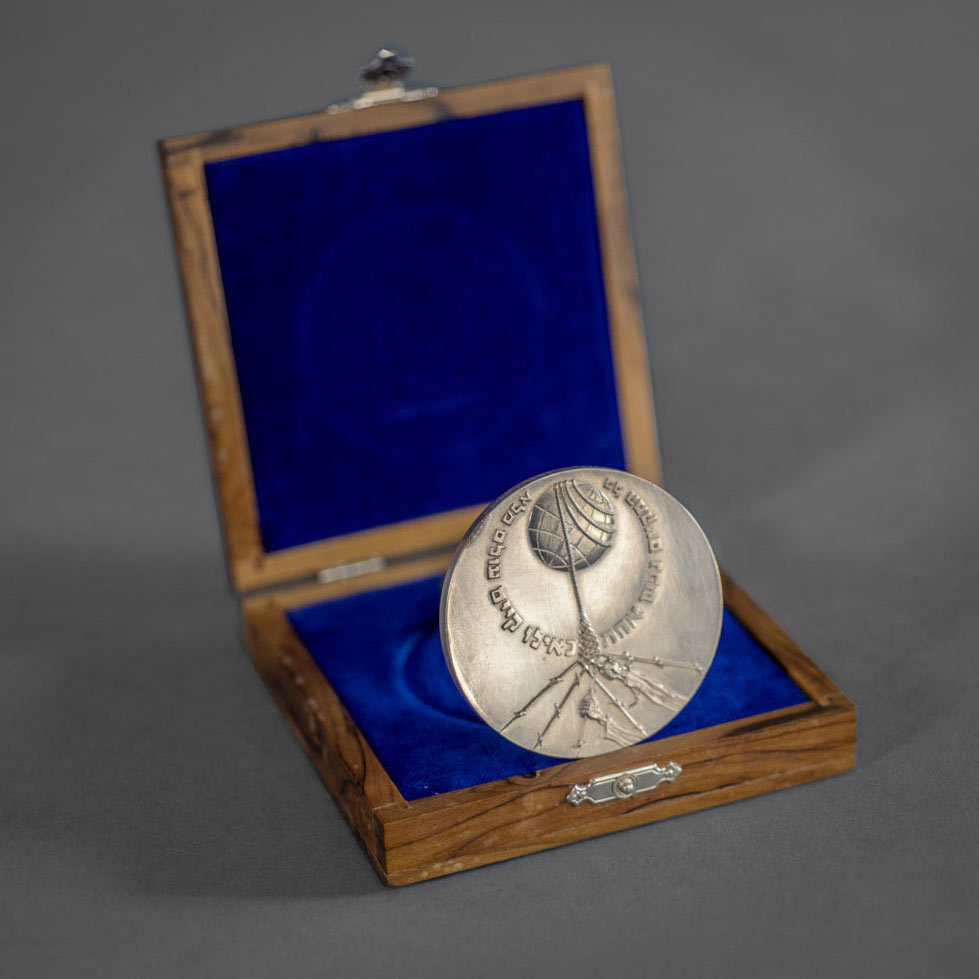
“I, or rather we, had been confined [in the Glass House] for months, away from these horrors. Although we had received terrifying information here and there, the sudden shock of witnessing this destruction, on such a grand scale, with my own eyes, was simply overwhelming. […] The sight of Budapest that day dug a deep fissure in my soul.”
Irena Braun, 14 years old
Official silence and belated homage
At the end of the war, Carl Lutz, like other diplomats, was expelled by the Soviets. He returned to Switzerland, where he was met with indifference.
In 1946, Lutz divorced Gertrud and married Magda Grausz, the Jewish woman who had come to ask his protection for her and her daughter Agnes.
On a professional level, the Swiss federal administration accused him of “abusing his powers” in issuing collective passports. Bern, however, was unaware that its employee had himself been involved in the creation and delivery of false papers to Jewish refugees. The State would learn of this later… Lutz being protected by a certain notoriety abroad.
In the end, the official silence surrounding his actions was tantamount to disavowal. Depressed, Carl Lutz refused a transfer to Baghdad, Iraq. He was assigned to the Office for the Defense of German Interests in Zurich, then to the Secretariat for Injured Property in Japan in Bern. In 1960, he completed his career as Consul General in Bregenz (Austria). He retired in 1961 and died in Bern on February 12, 1975.
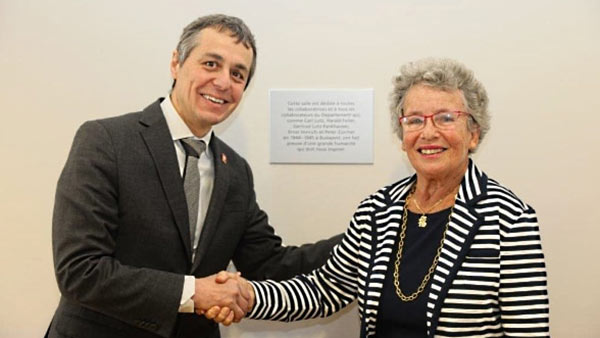
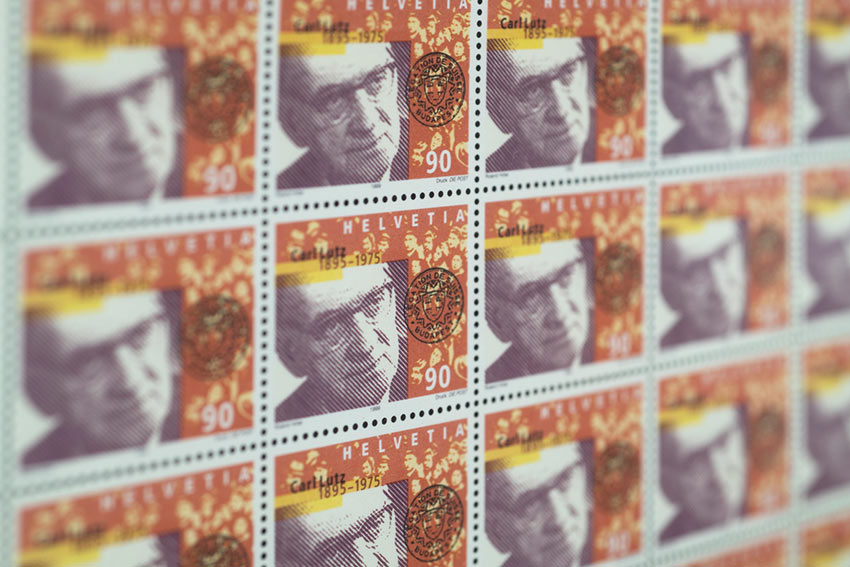
Carl Lutz was the first Swiss citizen to be recognized as Righteous Among the Nations by the Yad Vashem Memorial – in 1964. He was nominated three times for the Nobel Peace Prize, and has been honored in Germany (Order of Merit, 1962), Argentina, the USA and Israel. In 2014, he was posthumously awarded the Presidential Medal by his alma mater, George Washington University. Thanked by the President of the Hungarian Council of Ministers in 1948, Lutz was honored at the end of the Cold War with a Quay and two monuments in his name, on Dohany Street and Liberty Square, in Budapest. In 2023, his daughter was awarded the Gold Cross of Hungarian Merit.
Hailed by his native Appenzell, the civil servant was ignored in his own country, apart from a mention in a speech by Federal Councillor Feldmann in 1958. The real rehabilitation came in 1995. In 2018, Switzerland named one of the rooms in the Federal Palace after him, and Parliament rose to greet his family in plenary session.
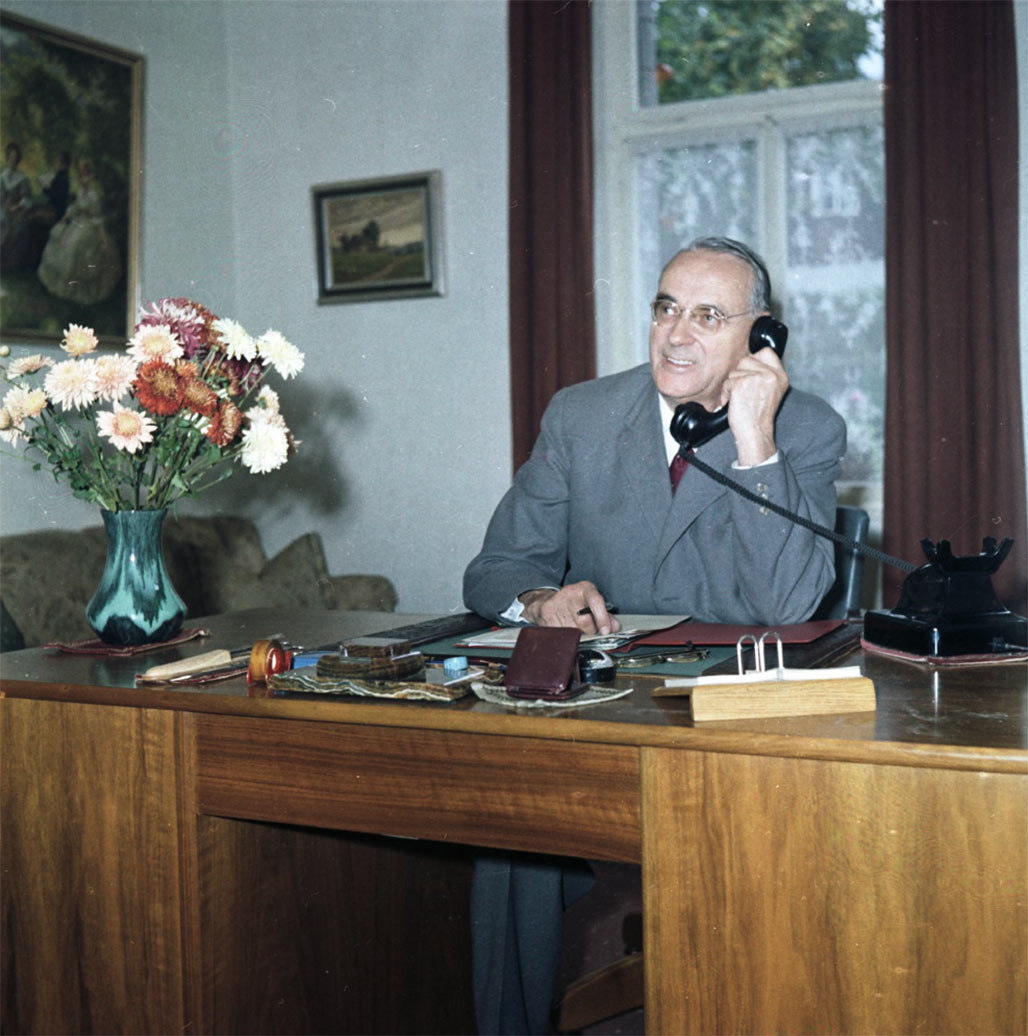
In 2021, Geneva pays tribute to him with an exhibition inaugurated by the United Nations High Commissioner for Human Rights, while the United States dedicates a room in its Embassy in Budapest.
Ongoing research
The scale of Carl Lutz’s rescue efforts is often misrepresented, with excessive estimates taken from a letter written in 1948 by Mihaly Salamon (62,000 people protected).
These figures are an undocumented personal estimate. It is considered unreliable by several renowned historians, and excessive by the Hungarian Holocaust Memorial. The reality is probably lower than this estimate.
Using unused archives, the Carl Lutz Society has carried out research on the subject, which has been presented at a symposium in Warsaw in 2021.
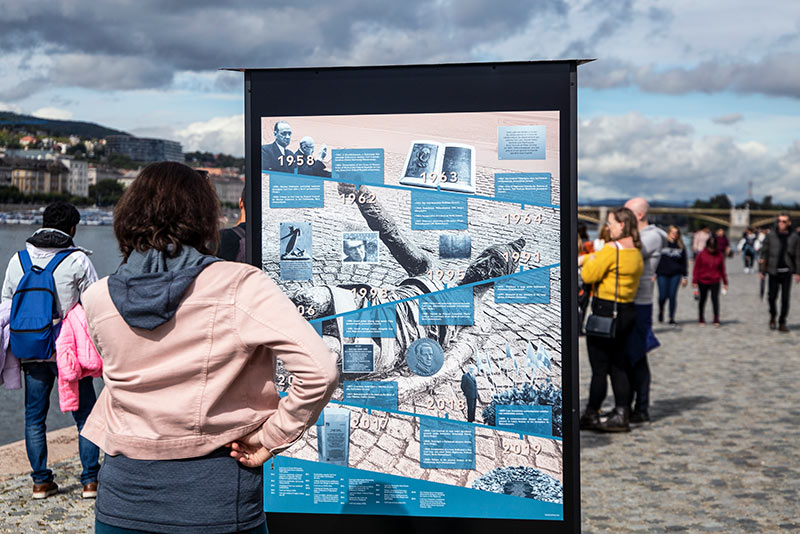
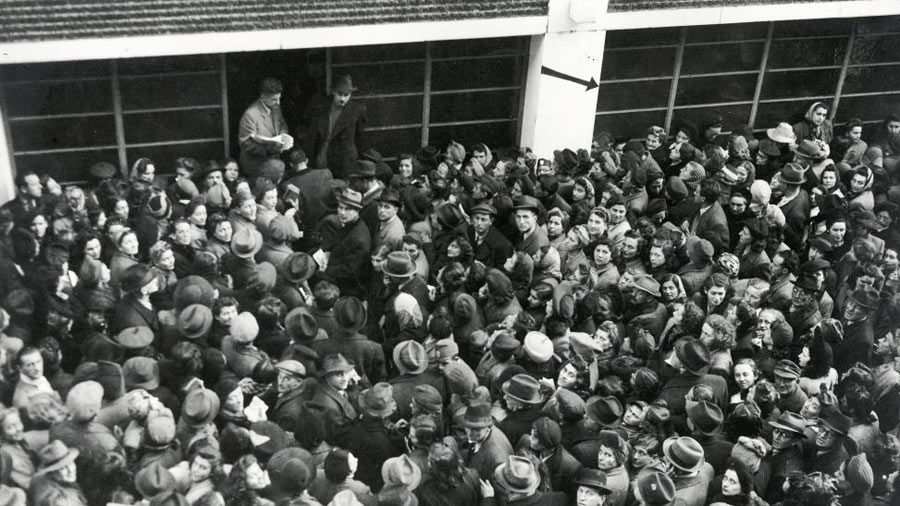
In the absence of precise figures, it’s fair to say that Carl Lutz saved “several tens of thousands of people”.
The survivors and their families now live in over twenty countries.
“These [Jews] were Hungarian citizens, which deprived them of diplomatic protection. But the laws of life are stronger than the laws of men.”
Carl Lutz, 1946
